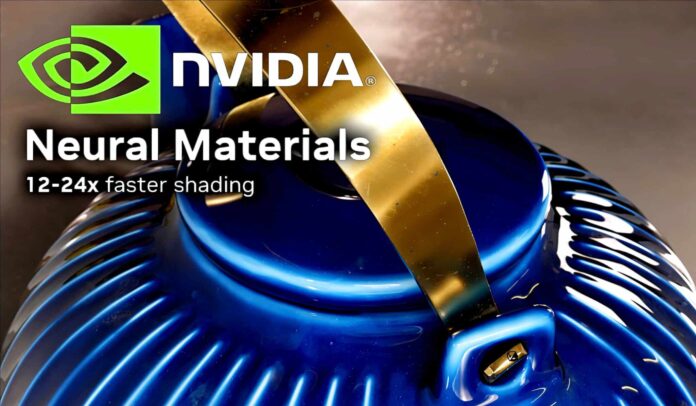A timetable for when this technology will be used in games has not yet been set
SIGGRAPH 2024 is in full swing: from July 28 to August 1, industry representatives will meet in Denver (Colorado, USA) to discuss advances in computer graphics and interactive technologies.
Nvidia is also on board. The GPU manufacturer has used the first two days of SIGGRAPH to talk primarily about artificial intelligence – and to present a new technology
In detail:This technology is aneural system in full real time for materials
- With this technology under development, Nvidia is pursuing the goal of
achieving real-time cinematic graphics quality
while dramatically increasing shader performance over traditional rendering. - In short: games in particular should offer greatly improved graphics. Nvidia has uploaded a first example to YouTube, which shows a ceramic teapot with numerous details.
How it works:In the accompanyingresearch paperthe Nvidia researchers go into more detail about the technology behind it.
- Simply put, a combination of
algorithmic and system innovations
is used. - Hierarchically arranged textures are interpreted by neural decoders, which in turn are divided into two priorities.
- These priorities are the reconstruction
mesoscale
effects (i.e. slightly larger than at the micro level) and efficient sampling.
According to Nvidia, the resulting image supports anisotropy, level-of-detail rendering and the integration of deeply layered material graphs.
Also scalable on older hardware:Tensor operations are used for the shaders, which enable efficient integration of the neural decoder in the render pipeline. An Nvidia GPU with tensor cores should therefore be a prerequisite.
- Current hardware is not required for this, however, as the research paper explicitly mentions the almost six-year-old RTX 2080 Ti as a GPU that can benefit from the new technology.
- Scalability is also a major advantage here: the more materials are added to the calculation, the more constant the render times become.
- All in all – at least Nvidia promises – this opens the door for the use of film-quality images in real-time applications such as games and live previews


